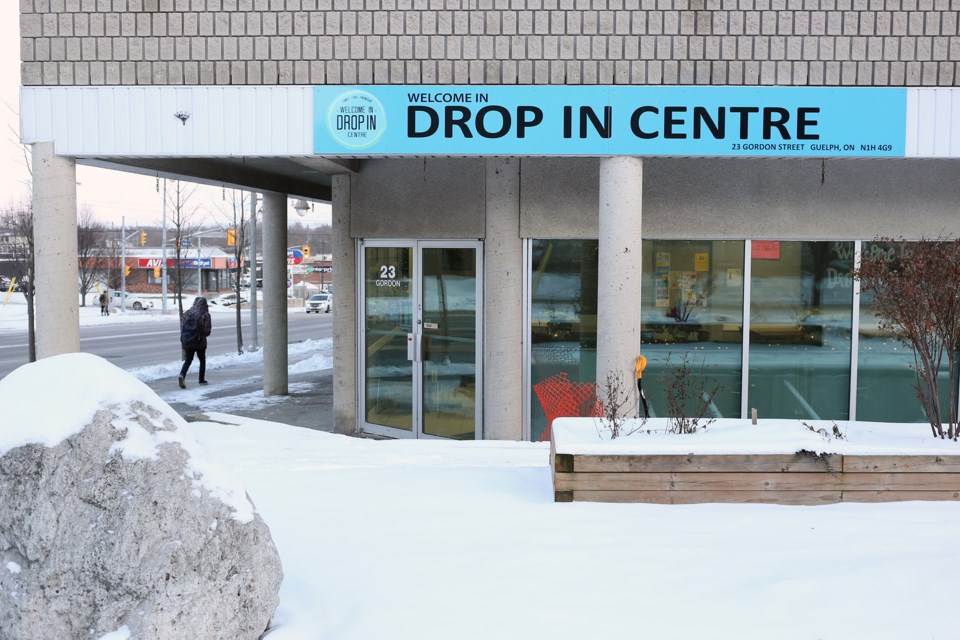Multiple agencies have banded together in Guelph to create an emergency space where people who are experiencing homelessness can isolate during the COVID-19 pandemic.
Projects like the new Supported Isolation Centre can take weeks or months to plan and set up, said Raechelle Devereaux, executive director of the Guelph Community Health Centre by phone Thursday.
In contrast, this project was put together mostly over the weekend by partner agencies Guelph Community Health Centre, Wyndham House, Stonehenge, Therapeutic Community and the Drop in Centre.
“All of the organizations were all hands on deck and literally worked around the clock to make happen,” said Devereaux. “It was a real testament to how caring this community is.”
An area on the second floor of the Drop In Centre has been transformed into a space for up to three people to isolate and includes a bed, clean clothing and meals and is staffed 24 hours a day.
The people using the site must be referred by either the Guelph General Hospital or COVID-19 Assessment Centre. They are individuals either diagnosed with COVID-19, are experiencing symptoms of COVID-19 or awaiting test results for the virus.
Devereaux said the first patients were referred Thursday morning, but noted the site was not yet full at the time of the interview.
The site is intended for people who are experiencing absolute homelessness, said Devereaux. Efforts will first be made to find people a place to stay to isolate with family or friends.
“This is an emergency space while we explore a larger and broader space in the community,” she said.
The space was previously being used as the community’s Supportive Recovery Room, a project Devereaux said was recently temporarily wound down.
“That was a decision made mid last week not directly driven by COVID, but certainly influenced by it,” she said.
Some staff vacancies and self-isolation necessitated the temporary closure until at least April 6. The Supportive Recovery Room is funded to be open until March 2021.
“We were looking at a number of different emergency spaces we could potentially use and given we had the supplies on site at the supportive recovery room — namely a bed and potentially using those standalone offices on the second floor of the Drop In — the group looked at that space as an option pretty quickly as an option,” said Devereaux.
Wellington Dufferin Guelph Public Health is assisting in planning for the project that will see it expand capacity in the future.
“This is an uncertain time for everyone, and having a safe place to isolate will make a significant difference in our community, especially among our most vulnerable community members, says Jennifer MacLeod, manager at WDG Public Health. “Fortunately we live in a community filled with strong community partners who have mobilized around so many key parts of this complex pandemic we find ourselves in.”
The Supported Isolation Centre is supported by an integrated staffing model from the partner agencies. On Thursday afternoon it was staffed by a registered nurse from the Community Health Centre.
“They just took over for a Stonehenge Therapeutic Community counselling staff person,” said Devereaux. “Tomorrow we have staff on site from Wyndham House, so really all organizations are looking at redeploying staff to support this model and create hybridized support that comes from each of our organizations.”
People experiencing homelessness are disproportionately impacted by complex health issues, said Devereaux.
“They are often experiencing multiple health issues that overlay each other,” said Devereaux. “We know people with preexisting health conditions often experience greater health complications from COVID-19.”
Safeguarding the most vulnerable population in Guelph from COVID-19 is important not only to protect that population, but for everyone in the city, said Gail Hoekstra, executive director at the Welcome in Drop in Centre.
“Our community’s shelters have opened their doors 24/7 to support our homeless community through this difficult time,” said Hoekstra. “We also need a place for sick people to recover, where we are also able to reduce risks of transmission in our community at this time.”
